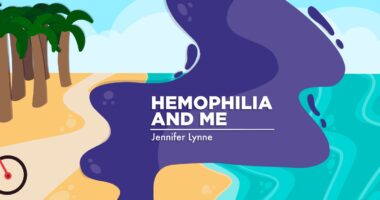What I learned from a recent summit on mild bleeding disorders
My top 5 takeaways from the HFA's Mild Matters Summit in Oklahoma

Last month, I had the privilege and the honor of being one of 60 attendees at the Mild Matters Summit in Tulsa, Oklahoma, organized by the Hemophilia Federation of America (HFA).
The summit aimed to empower those with mild bleeding disorders by providing essential information and tools to enhance their diagnostic and treatment journeys. The gathering underscored the importance of collaboration and education, creating a space where people could share insights, experiences, and strategies to navigate the complexities of mild bleeding disorders.
The event featured exceptional speakers, including Jill Johnsen, MD, an associate professor of hematology and oncology at the University of Washington, physical therapist Nancy Durben, Tricia Huguelet, MD, pediatric and adolescent gynecology section chief at Children’s Hospital Colorado, and Shellye Horowitz, director of education at HFA and a former Hemophilia News Today columnist. Their insights and expertise added immense value to the summit, highlighting its significance as a platform for knowledge exchange.
Above all, connecting with fellow participants was the most rewarding aspect of the experience. The shared understanding and camaraderie formed a supportive community that transcended the conference. I look forward to maintaining contact with several of them and aim to feature their inspiring stories in upcoming columns to further amplify the voices and experiences of those navigating the challenges of mild bleeding disorders.
Following are 5 observations I made during the summit:
Too often, the broader medical community still doesn’t acknowledge that women can have bleeding disorders. Within our women’s group at the summit, we engaged in role-playing exercises highlighting encounters with uninformed or dismissive healthcare professionals. It was disheartening to find that everyone in the room could relate to statements such as “you can’t have a bleeding disorder” and “women don’t have hemophilia.” This underscores the urgent need for a collective effort to raise awareness and challenge these persistent misconceptions.
Men struggle, too. Men grappling with mild hemophilia and other bleeding disorders face challenges that also deserve attention and understanding. Their treatment may be inconsistent and they may not know how to recognize a bleed. Several I spoke with don’t keep treatment on hand, instead relying on emergency rooms for bleeding episodes. By recognizing and addressing the struggles that men with mild hemophilia face, we can foster a more inclusive and supportive environment.
The majority of attendees had hemophilia or von Willebrand disease. However, I found that undefined platelet disorders, Ehlers-Danlos syndrome, and hypermobility were surprisingly frequent among the participants. I realize we have much to learn about platelets and hypermobility and how they may affect the clotting cascade.
While hematologists generally have the best intentions for their patients with bleeding disorders, we can enhance collaboration by actively participating in our healthcare. Providing visual documentation, such as photos and detailed records of our bleeding episodes, can be instrumental in aiding hematologists. By offering this valuable information, we empower our providers to make more informed decisions, tailor treatment plans more effectively, and improve the overall quality of care.
Extending kindness toward medical practitioners is crucial, especially considering that some may lack the knowledge to assist people with bleeding disorders. Patience and an inclination toward education become essential in such situations, fostering a collaborative environment. For example, Horowitz said she expresses her appreciation with chocolate, a small yet meaningful gift that goes beyond words.
In my opinion, the summit solidified HFA’s role as a foremost advocate organization for individuals grappling with mild bleeding disorders. I am grateful and honored to have been included.
Note: Hemophilia News Today is strictly a news and information website about the disease. It does not provide medical advice, diagnosis, or treatment. This content is not intended to be a substitute for professional medical advice, diagnosis, or treatment. Always seek the advice of your physician or another qualified health provider with any questions you may have regarding a medical condition. Never disregard professional medical advice or delay in seeking it because of something you have read on this website. The opinions expressed in this column are not those of Hemophilia News Today or its parent company, Bionews, and are intended to spark discussion about issues pertaining to hemophilia.







Leave a comment
Fill in the required fields to post. Your email address will not be published.